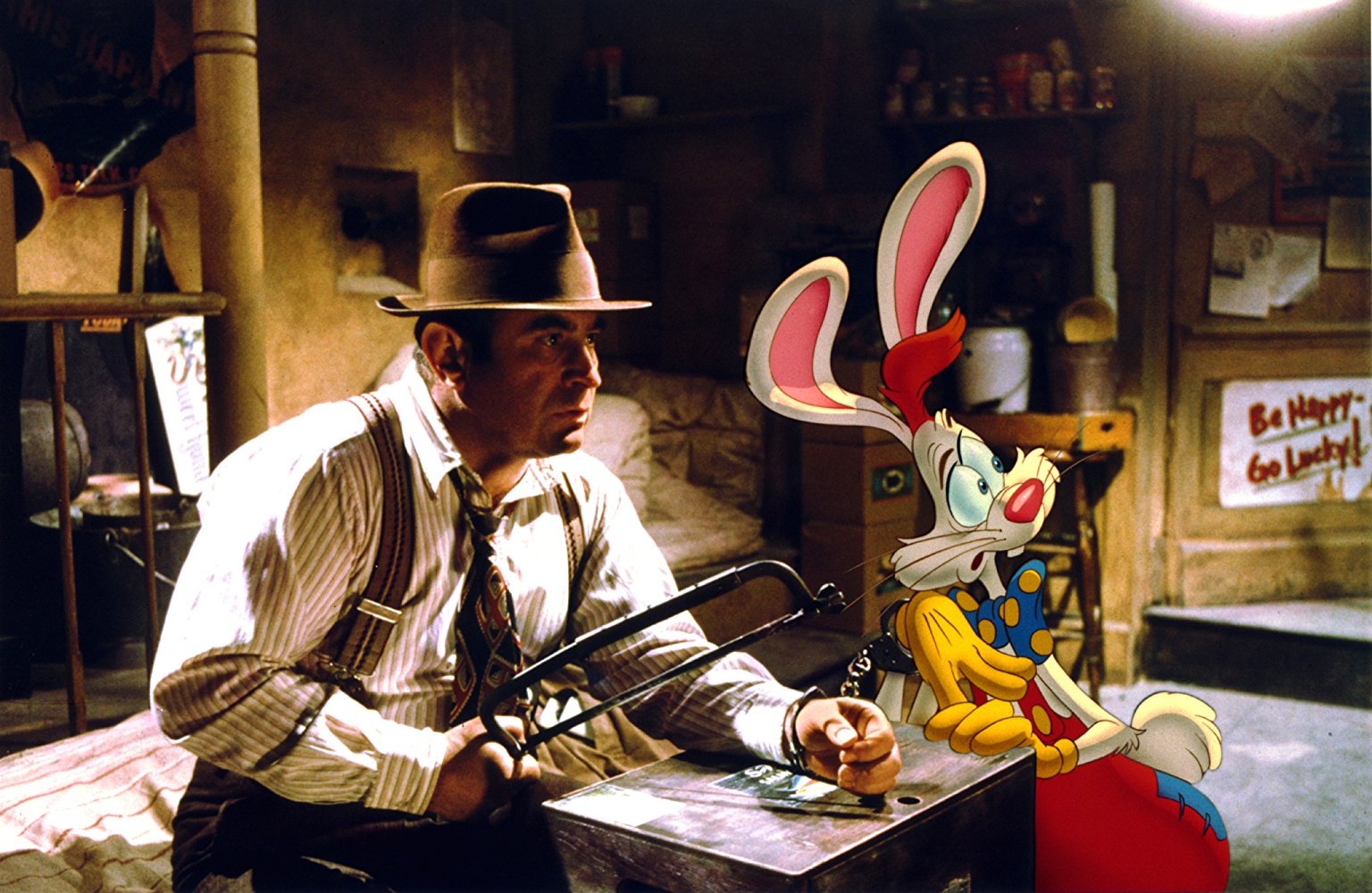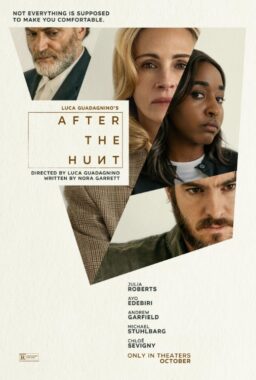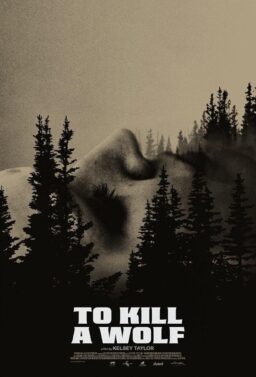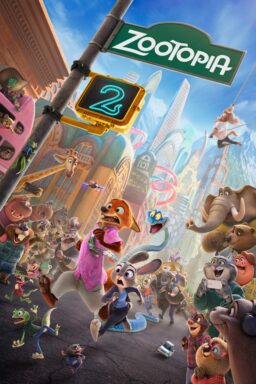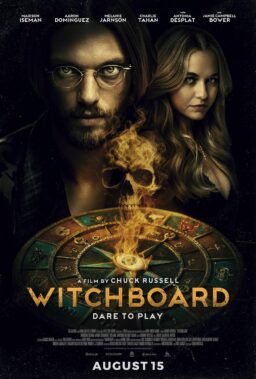Still holding its place well in the history of movie special effects even after 30 years, “Who Framed Roger Rabbit” remains a timeless entertainment. Although mixing animation into live-action scenes has been relatively less awesome these days thanks to the rapid technical advance of special effects, the film distinguishes itself with not only its monumental technical achievement but also its sheer excitement.
I remember well when I encountered it for the first time around 1994. After learning of its existence via an evening TV program, I rented its VHS copy at a local video rental shop, and the movie instantly grabbed my attention as promising more fantastic things to come. I was enthralled by the hilarious zaniness of the opening animation sequence, mesmerized by that sultry moment at the Ink and Paint Club, horrified by the demise of that poor little red shoe, exhilarated by that frantic car chase sequence, overwhelmed by the cheerful anarchy of Toontown, and certainly thrilled by that climactic sequence packed with unexpected moments of laughs and surprises.
I also enjoyed noticing many familiar animation characters appearing here and there throughout the film. As it was produced by Walt Disney Pictures and Amblin Entertainment, the movie could surely present a number of notable Disney animation characters, and it also could use numerous non-Disney animation characters thanks to executive producer Steven Spielberg’s pre-production negotiations with other studios including Warner Brothers and Fleischer Studios. While it was enjoyable to see Mickey Mouse and Bugs Bunny or Donald Duck and Daffy Duck sharing the screen together, I was especially amused when Droopy appeared as a rather unkind elevator operator, and Betty Boop was poignant when she lamented about her less popular status.

In the movie, all these and other animation characters, usually called ‘toons,’ live within Toontown, a ghetto-like area located in Hollywood, 1947. Many of them work as performers in Hollywood studios, and Roger Rabbit (voiced by Charles Fleischer) is one of star cartoon performers in the town. But, as shown from the opening animation sequence, things have not been going well for him. He and his longtime partner Baby Herman (voiced by Lou Hirsch) almost get everything right during the shooting of their last animation film, but he has a trouble in giving a right cartoon effect in the end, and that is how a private detective named Eddie Valiant (Bob Hoskins) comes into the situation. Roger’s studio boss requests Valiant to dig some dirt on Roger’s dear wife Jessica Rabbit (voiced by Kathleen Turner) for motivating Roger more, and Valiant agrees to do that mainly because of his difficult economic situation at present.
When Valiant goes to a night club where Jessica routinely does an evening performance for her human audiences, he is surprised by what a sexy and beautiful cartoon lady she actually is. Seductively exuding the sexual confidence reminiscent of Lauren Bacall and Veronica Lake, Jessica mesmerizes all of her audiences including Valiant as singing “Why Don’t You Do Right?” on the stage, and it does not take much for him to see that something is going on between her and a wealthy businessman who is the owner of Toontown.
What follows not long after that is an unexpected case of murder, and Valiant soon finds himself getting more involved in the case along with Roger, who desperately seeks help from Valiant as becoming the prime suspect of the case. While they bounce from one comic circumstance to another, it is gradually revealed to them that there is a diabolical conspiracy on Toontown, and they must stop this conspiracy before it is too late for Toontown and its denizens.

Quite witty and humorous in its unlikely juxtaposition of classic film noir and animation, the movie supremely works as a loving homage to both of its two seemingly incompatible genres. While many of its hilariously frantic moments would surely impress Tex Avery, the movie is also reminiscent of those classic noir films made during the 1940-’50s, and it is really fascinating to watch how deftly the movie balances itself as wildly mixing different genre elements together. As a matter of fact, its tongue-in-cheek handling of film noir elements are so smart and dexterous that, in my humble opinion, it deserves its own place among notable neo-noir films such as, say, “Chinatown” (1974).
When I recently revisited the movie, I came to appreciate more of its superlative technical details which remain fresh. While combining live-action and animation had already been attempted many times since the 1920s, the movie was ground-breaking for its far more fluid and dynamic mix of live-action and animation, which is crucial in creating its vivid fantasy world where human and animation characters naturally coexist. Instead of merely sharing the screen together, all figures alike in the film freely interact with each other on screen with no apparent sign of limitations, and the cinematography by Dean Cundey is anything but static in its complicated camerawork which was meticulously planned and elaborated before the shooting. As the camera effortlessly moves here and there, the animation characters in the film are presented with palpable three-dimensional physical presence while constantly changing dimension and perspective on the screen, and they are also complemented well by Bob Hoskins and other human performers in the film, who act as if they were really performing with animation characters in front the camera.
The overall result is all the more remarkable considering that the movie was made before the era of computer-generated imagery (CGI). Supervised by animation director Richard Williams, who won a special Oscar for his contribution to the film (the movie also won three Oscars for best special effects, sound effects editing, and editing, by the way), the animation part of the movie was drawn by hand from the very beginning, and then it went through a number of painstaking processes for its flawless incorporation into live-action scenes. Thanks to subtle visual touches including multi-layered chiaroscuro effect, the animation characters in the film look and feel quite real to us, and that makes us more immersed in the world they inhabit along with human characters.
Furthermore, the story of the movie, which was loosely adapted from Gary K. Wolf’s novel Who Censored Roger Rabbit? by Jeffrey Price and Peter S. Seaman, is a lot more than a perfunctory base for special effects. While briskly hurling tons of jokes and gags as demanded, the movie also brings some depth to its main characters, and we come to care about them more than expected. Although he is often insufferable, we come to like Roger as accepting his irrepressible comic nature, and Jessica turns out to be far from a mere femme fatale as revealing a sincere heart behind her glamorous appearance (“I’m not bad—I’m just drawn that way”). In case of Valiant, there is a sublime wordless scene which succinctly conveys to us everything about this gruff guy and his jollier past, and we come to cheer for him when he boldly attempts to revive his certain particular set of skills during the climax sequence.

“Who Framed Roger Rabbit” was directed by Robert Zemeckis, who made a number of entertaining movies such as “Back to the Future” (1985), “Forrest Gump” (1994), “Contact” (1997), “Cast Away” (2000), “The Polar Express” (2004), and “Flight” (2012). Although he is sometimes underrated mainly due to his status as a mainstream commercial director working in Hollywood, it is undeniable that he is a first-rate filmmaker who has constantly tried new and different things throughout his career, and I have been impressed by his versatility among various genres. While he will be always remembered for “Back to the Future” and “Forrest Gump,” he can go all the way for vicious black comedy as he did in “Death Becomes Her” (1992), and he also showed us that he can handle more serious subjects through the thoughtful SF drama of “Contact” (1997) and the sobering alcoholism drama of “Flight.” In the case of “Who Framed Roger Rabbit,” it was clearly a labor of love for Zemeckis as well as his crew and cast, and their herculean efforts not only were rewarded with a big critical/commercial success but also led to the following renaissance of Disney animation.
In our current era overflown with digital animation and CGI, “Who Framed Roger Rabbit” may look a bit old on the surface, but it still can enchant and enthrall us as much as other great animation films, and I think it will continue to hold its singular place. Paraphrasing that memorable line from “All About Eve” (1950), I tell you that there never was, and there never will be, another like it—and I also assure you that you will have plenty of fun, too.
